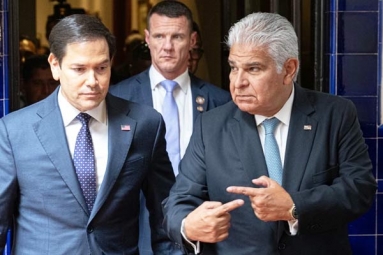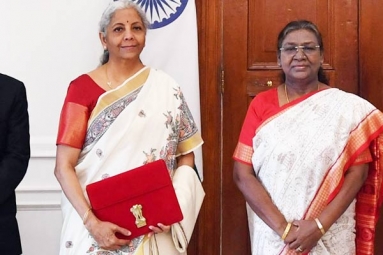
(Image source from: www.telegraph.co.uk)
You might be the one who traveled over every corner of India, from superlative beaches to sky-touching mountains, but then it is free from doubt that you will be left open-mouthed to know that there are a plenty of unexplored places in India - some due to natural phenomenon and others because of the indigenous tribes that reside there.
Up to now, you might have come across recent reports about the killing of 26-year-old American missionary John Allen Chau on November 16 by tribesmen from the North Sentinel Island to keep him off from their island home.
To begin with, let us acquaint you to the 'North Sentinel Island':
It is one of the Andaman Islands, which is home to the Sentinelese community that violently discard any contact with the modern world.
Related content: Sentinelese Tribe: Indian Tribe Detached from Outside World
The community is protected under the Andaman and Nicobar Islands Protection of Aboriginal Tribes Act of 1956 which prohibits anyone to enter the island and any approach closer than five nautical miles. The area is patrolled by the Indian navy.
Any approach by human or vessels would turn Sentinelese violent.
Earlier in 2004, the Indian government aircraft was attacked with arrows, spears, and stones while it was observing the Islanders the damage caused after the Indian Ocean Earthquake.
Here are a few other places in India that look like a traveler's paradise but are too breakneck to visit.
Bastar, Chattisgarh
At one time a princely state during the British rule, Bastar is now home to violent Naxalite activities.
 ImageSource: Catch News
ImageSource: Catch News
The district is full of waterfalls, woodlands, and temples but it comes in the red corridor, making it a high-risk spot for tourists.
Aksai Chin, Jammu & Kashmir
Aksai Chin is a disputed border area between India and China and is located either in the Indian province of Jammu and Kashmir, or the Chinese province of Xinjiang, in the west.
Most part of the area, which is patrolled by the Chinese military, is occupied by the nomadic groups such as the Bakarwal.
 ImageSource: AajTak
ImageSource: AajTak
No uncertainty that the place is marvelous but don't even think of visiting it as those entering the area might shot down to death.
Phulbani, Odisha
The region is located a few kilometers away from Bhubaneshwar, the capital of Odisha. It is named after lady 'Phulardei', who sacrificed her life for a religious ritual.
 ImageSource: Odisha Bytes
ImageSource: Odisha Bytes
The place is also abode to the Lord Jagannath Temple and a number of natural wonders. But since the last few years, the increase in the Maoist activities has resulted in the decline in the number of tourists.
Silent Valley National Park, Kerala
The national park is home to some rare species of flora and fauna. The area was explored in 1847 by the botanist Robert Wight. There is no record of any tribes being settled here but the adjacent valley of Attappady Reserved Forest is occupied by the Mudugar and Irula tribal people.
 ImageSource: redscarab - WordPress.com
ImageSource: redscarab - WordPress.com
The attack by the Maoists in December 2014 and their growing influence has resulted in an abrupt decline in tourist influx.
Manas National Park, Assam
Also known as Manas Wildlife Sanctuary, the beautiful forest reserve is a UNESCO (United Nations Educational, Scientific and Cultural Organization) Natural World Heritage Site and is located in the Himalayan foothills. The park is popular for its rare and endangered endemic wildlife species.
 ImageSource: nenow.in
ImageSource: nenow.in
The park has now turned into a refuge for the National Democratic Front of Bodoland-Songbijit militants. The Indian army spotted few terrorists inside the park during their search mission.
-Sowmya Sangam










